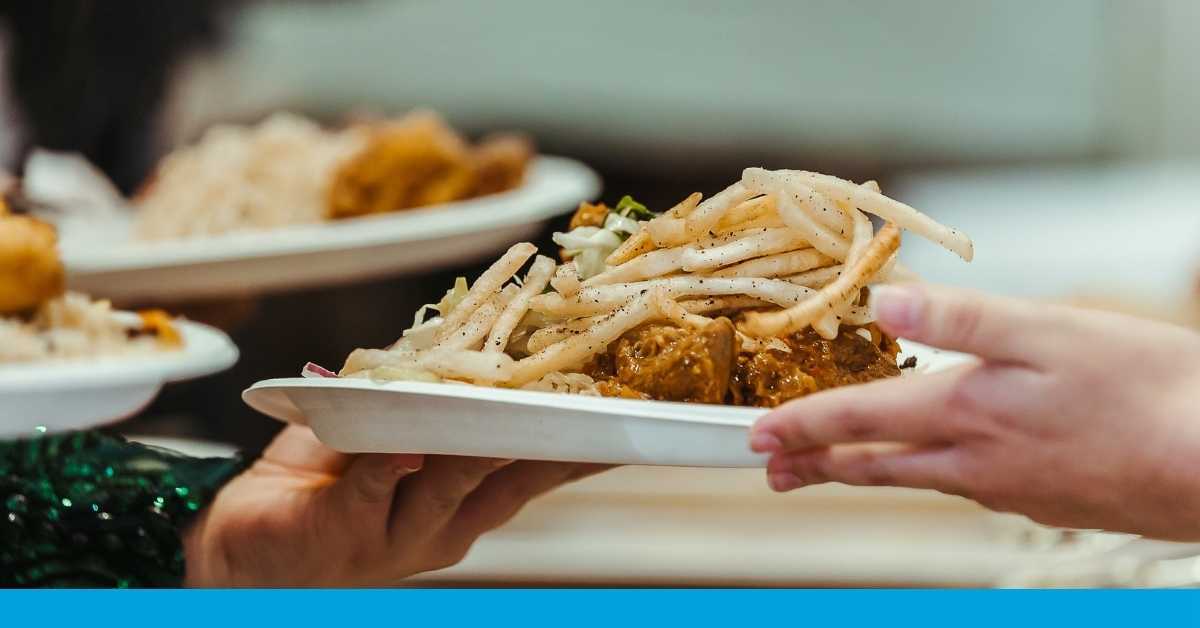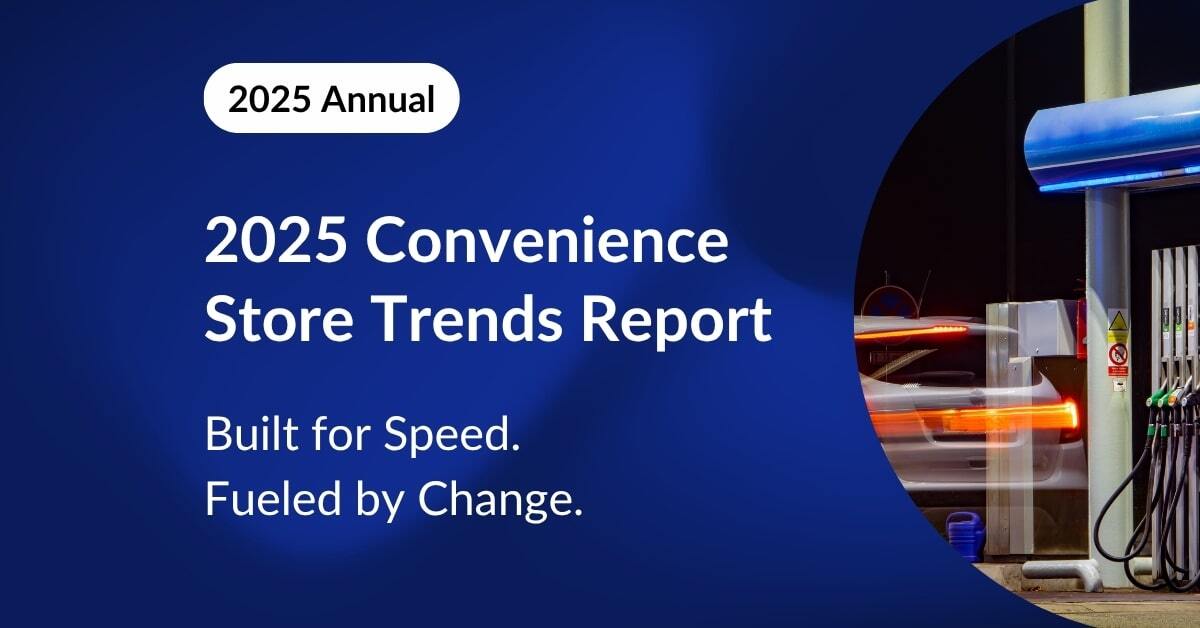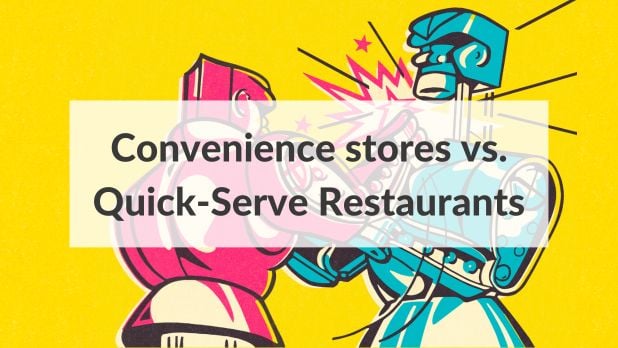Are Today’s C-Store Trends Fueling a Whole New Customer?
You walk into a convenience store at 8:15 AM. Someone’s ordering a hot breakfast meal. The guy behind you grabs a protein smoothie and scans a...

The numbers are here. The momentum isn’t new. But they’re getting harder to ignore. If you're in the quick-service game, there’s a competitor creeping into your lane. It’s not a rising QSR brand or a ghost kitchen with viral buzz.
It’s your neighborhood C-Store.
C-Store foodservice has been steadily building its game and now, they’re starting to compete in spaces long owned by quick-service restaurants. We’re talking made-to-order meals, hot breakfast sandwiches, fresh salads, bundled value deals, and even the perception of freshness that QSRs once had a lock on.
And consumers are responding with their wallets…and their appetite. Their choices are fueled by shifts in customer experience and satisfaction that C-Stores are getting right.
In our 2025 Convenience Store Trends Report, we tracked where people go when they’re hungry, what they order, how they rate freshness, what they see as value and where they choose to eat. The data revealed a quiet reshaping of where fast-food decisions get made. So, are C-Stores a real threat to the market share of QSRs?
Here’s what stood out.
Explore how mystery shopping can help you evaluate your convenience store technologies.
The pump might bring customers in, but it’s the food that gets them to stick around. According to Technomic, C-Stores foodservice grew by 5% in 2024, and it’s expected to climb another 5.7% in 2025. It may not seem dramatic at first glance, but the trend is clear. Momentum is building, and C-Store foodservice is steadily claiming more of the market.
And let’s be honest, it’s not just about roller dogs anymore. Today, 85% of consumers say they’ve tried made-to-order meals at convenience stores. Think hot breakfasts, fresh sides, and full custom orders. Brands like Wawa and Casey’s are making it happen right in front of the guest.
Where the meal takes place matters too.
Sure, a lot of people still eat in their cars. But more customers are choosing to stay and dine inside the store or at their destination. That number nearly doubled year over year.

This isn’t just about eating. Sitting down to enjoy a meal means the customer feels comfortable enough to pause. It means they trust the space. When that happens, the brand becomes part of their day.
And that’s not something any QSR wants to give up.
Read more on how competition with convenience stores is heating up in the pizza industry, as C-Stores emerge as carryout contenders.
Sandwiches, wraps, paninis — these are the pack leaders when it comes to C-Store food. But breakfast is rising fast. Convenience stores saw a 7 percentage point increase in customers buying breakfast items this year compared to 2024. The reason is simple. It’s fast. It’s satisfying. And according to Verified Market Research, the on-the-go breakfast market is projected to grow from 1.4 billion dollars in 2024 to 2.24 billion by 2031.
And it’s not just breakfast getting attention. We measured hot meals, better-for-you salads, soups, and more. Many are gaining traction. C-Stores are spinning the food variety wheel and serving up craveable convenience in every aisle.
Shopper Quotes:
“More ready made hot food should be made available at night.”
Placer.ai calls it out clearly. Convenience stores are flourishing, transforming into some of the most exciting dining and tourist destinations in the country.
Want to see what the fast-growing brands are doing to lead the charge? Download the study!

There’s one question that makes or breaks a foodservice experience: is it fresh?
Customers don’t wait for you to tell them. Their eyes, nose, and instincts make the call instantly. And more often than not, they’re spot on.
We studied exactly how consumers judge food freshness at convenience stores. Smell, temperature, packaging, staff prep, expiry dates—everything. The results were clear. One factor stood out more than most: cleanliness. 70% of shoppers said a clean store shaped how fresh they thought the food was. That’s a big deal for a channel often defined by speed, not ambiance.
In fact, our report reveals some bands are leaning into cleanliness as a C-Store foodservice strategy. And it’s paying off. Commonly cited cleanliness factors were store hygiene, staff appearance, clean prep areas, and organized displays.
Shopper Quotes:
“If the store is clean, I assume the food is clean”, “Staff appearance matters.”
“I am more likely to trust the freshness if I see employees actively tending the food service area.”
C-Stores leaning into cleanliness as a freshness strategy are already seeing results. 43% of consumers say C-Store food is just as fresh as what they’d get at a grocery store or restaurant. And the knockout punch? 11% say it’s even fresher.
We also looked at the subtle cues. Is the food soggy? Does the food look like it’s been sitting too long? Is the packaging clear and professional? Even things like “freshly made today” labels go a long way. These details may seem minor, but they stack up to deliver a more trusted and satisfying customer experience.

Consistency across C-Store foodservice operations also plays a crucial role. The importance of operations did not go amiss as every level of food preparation from ingredient transparency, packaging standards, and employees checking for quality all fell under the purview of perceived freshness.
And then there’s the operational side. From ingredient checks to packaging standards and proper rotation, everything adds up. A digital checklist and inspection software makes it easy for staff to catch aging items, keep displays clean, and maintain a consistent standard for freshness. Other aspects like store hygiene can also be measured and enhanced through operational audits, which help ensure those standards hold up over time by checking whether they’re actually being followed across every shift and at every location.

A hot sandwich is great. A hot sandwich with a deal? That’s what moves volume.
Bundled meals, snack-and-drink combos, loyalty discounts…C-Stores are finding ways to package value without sacrificing food quality. The deals aren’t flash-in-the-pan either. They’re becoming standard.
When asked what motivates a made-to-order purchase, consumers didn’t just say convenience. They pointed to promotions, which jumped in importance from sixth to second place this year.
Value meals aren’t just about the price either. Shoppers want variety, flexibility, and control. 74% said more meal choices would make value offers more appealing, followed closely by lower prices and customization options at 72% each.

The perception is catching up too. 75% of consumers say made-to-order food at C-Stores delivers serious bang for their buck. That’s up from 62% last year. This trend aligns with findings from a Cardlytics study cited by Forbes, which reported that C-Store food sales have risen to over 20%, indicating a shift in consumer spending from traditional quick-service restaurants to convenience stores.
So, if value is rising and perception is shifting, what does that mean for QSRs?
We tracked the trend from 2022 through 2025, and the full story is in the 2025 Convenience Store Trends Report.
Foodservice wasn't the only thing we evaluated. Our study explored loyalty, technology, competition, and more. Read our latest blog on C-Store Trends for the whole breakdown.
Not overnight. But the edges are starting to fray.
In our research, 72% of consumers said they now see convenience stores as a viable alternative to fast food. That’s up from 56% last year. That kind of leap speaks volumes.
QSRs are still dominant. But if they’re not watching this shift closely, they’ll end up reacting instead of leading. And that’s a wide-open door for C-Stores.
The operators winning in foodservice? They’re investing in quality, speed, cleanliness, and flawless execution. That’s where the game is shifting. And the one thing that keeps it all on track? Measurement. The difference between a fresh idea and a failed rollout often comes down to what gets tracked and improved. And tracking customer experience and satisfaction is a critical part of that equation.
We tracked everything from mystery shops, operational audits, customer sentiment, and more.
Want the benchmarks? The red flags? The hidden drivers of satisfaction?
This is part-two of the blog series on this year's C-Store Trends Report.
| Back: Are Today’s C-Store Trends Fueling a Whole New Customer?

You walk into a convenience store at 8:15 AM. Someone’s ordering a hot breakfast meal. The guy behind you grabs a protein smoothie and scans a...

Consumers don’t care about the traditional divisions between industries. Channel blurring, the purchasing of goods and services from an alternative...

Delivery used to be a restaurant advantage, but new players are now competing on speed and pricing, challenging what diners expect when they order a...